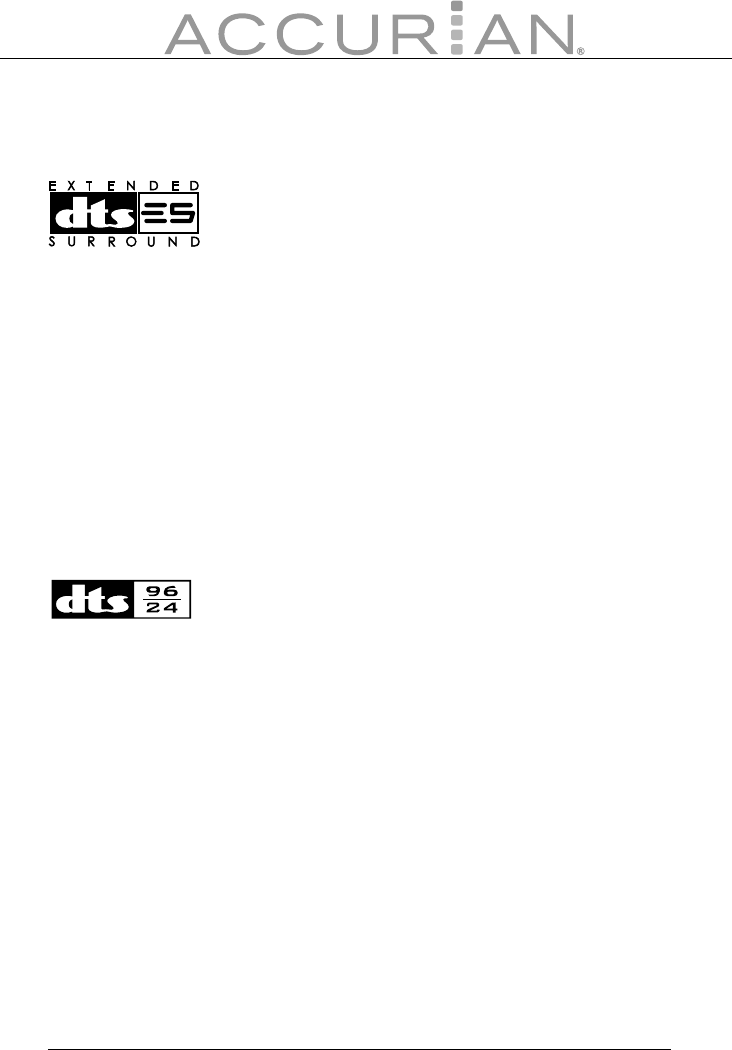
51
• Neo:6 off ers a music mode to expand stereo nonmatrix recordings
into the fi ve-or six-channel layout, in a way which does not diminish
the subtlety and integrity of the original stereo recording.
DTS-ES Extended Surround is a new multi-channel digital signal format
developed by DTS, Inc. While off ering high compatibility with the
conventional DTS Digital Surround format, DTS-ES Extended Surround
greatly improves the 360-degree surround impression and space
expression thanks to further expanded surround signals. This format has
been used professionally in movie theaters since 1999.
In addition to the 5.1 surround channels (FL, FR, C, SL, SR and LFE), DTS-ES
Extended Surround also off ers a Surround Back (SB) channel for surround
playback with a total of 6.1 channels. DTS-ES Extended Surround includes
two signal formats with diff erent surround signal recording methods, as
DTS-ES Discrete 6.1 and DTS-ES Matrix 6.1.
“DTS”, “DTS-ES Extended Surround” and “Neo:6” are trademarks of DTS, Inc.
The stereo CD is a 16-bit medium with sampling at 44.1 kHz. Professional
audio has been 20- or 24-bit for some time, and there is increasing interest
in higher sampling rates both for recording and for delivery into the home.
Greater bit depths provide extended dynamic range. Higher sampling
rates allow wider frequency response and the use of anti-alias and
reconstruction fi lters with more favorable audio characteristics.
DTS 96/24 allows for 5.1 channel sound tracks to be encoded at a rate of
96kHz/24-bit on DVD Video titles.
When DVD-video appeared, it became possible to deliver 24-bit, 96 kHz
audio into the home, but only in two channels, and with serious limitations
on picture. This capability has had little use.
DVD-audio allows 96/24 in six channels, but a new player is needed,
and only analog outputs are provided, necessitating the use of the D/A
converters, and analog electronics provided in the player.


















